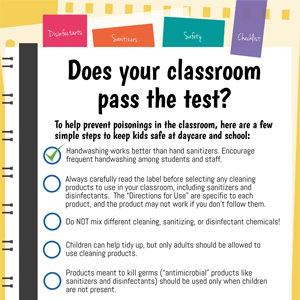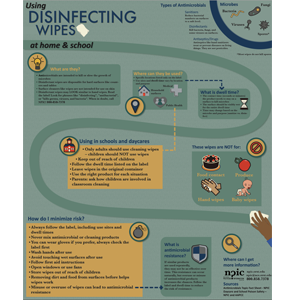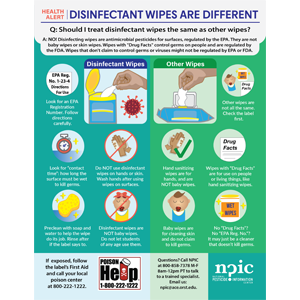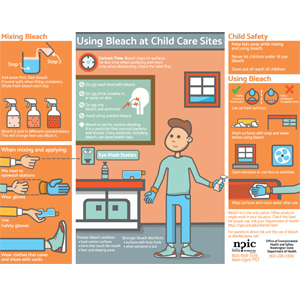Pesticides in Schools
1.800.858.7378npic@oregonstate.edu
We're open from 8:00AM to 12:00PM Pacific Time, Mon-Fri
A to Z

Bee Colony Collapse Disorder
Examples of different pesticides:
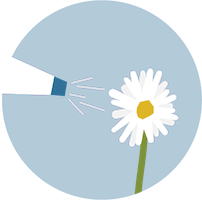
Weed killers (herbicides)
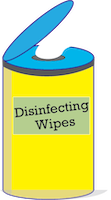
Sanitizing/disinfecting wipes/sprays (antimicrobials)
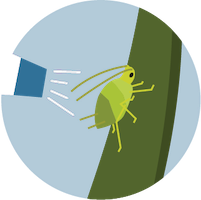
Bug sprays (insecticides)

Rat poison/bait (rodenticides)
Fungicides, herbicides, surface antimicrobials, insecticides, and insect repellents are all pesticides that may be used in schools. Antimicrobials like surface disinfectants and sanitizers control bacteria or viruses and can reduce sickness. Insecticides may control insects like mosquitoes that spread disease.
All pesticides may pose risk to human health, however children may be at higher risk than adults. This is because they are smaller and because their bodies and brains are growing. Children also act differently than adults. They often have more contact with the environment when they play on the ground or put their hands or objects in their mouths.
Examples of where pesticides may be used in schools:
- Disinfectants or sanitizers like bleach may be used to control germs on surfaces and toys.
- Insecticides may be used to kill lice or cockroaches in classrooms or cafeterias.
- Rodenticides may be used in areas where food has attracted mice or rats.
- Herbicides may be used on playing fields to control weeds that are tripping hazards.
Resources for teachers
Know your state laws!
All pesticides come with a label that tells the user how the product must be used. It is the law to follow all label directions. Aside from the label, there are no federal laws about how pesticides must be used in schools. However, the Environmental Protection Agency (EPA) encourages states and school districts to create policies to reduce the risks of pests and pesticides to children.
Many states have rules about how pesticides can be used in or near schools. These laws may apply to public schools, private schools, or childcare facilities. Tribal governments or U.S. Territories may also have rules. Your State Pesticide Regulatory Agency can provide information about state pesticide laws.
Examples of state laws:
- Some states may require school staff to have a special license to apply pesticides.
- Some states may not allow any pesticides other than disinfectants or sanitizers to be stored in schools.
- Some states may require that the school notifies parents when pesticides are used.
- Some states may not allow certain pesticides to be used.
- Some states may require school districts to develop an Integrated Pest Management program.
Teacher and student health in the classroom
- Remember, disinfecting/sanitizing sprays and wipes are pesticides! Like any pesticide, they can have health risks, including breathing effects.
- Consider using soap and water for routine cleaning, instead of a disinfectant or sanitizer.
- Bleach is not intended for routine cleaning.
- Target use of disinfecting/sanitizing products on high-touch surfaces.
- If students eat at their desks, the desks are food contact surfaces. Check the label of products to see if they can be used on surfaces that touch food.
- Reduce health risks after using pesticides including disinfectants:
- When possible, open windows after using pesticide products.
- If it isn’t possible to open windows, open doors and use fans to move fresh air into the room.
- Children and teachers should avoid treated areas until they are dry. This includes surfaces that are wet from disinfectant sprays or wipes including bleach.
- Consider applying pesticides when children are not at school. This will minimize exposure. For example, a pesticide applied on Friday afternoon will have all weekend to dry before kids return to school. This will make it less likely that children will be exposed.
- Check the label for required protective gear, like gloves. The person applying the product may consider wearing gear even if it is not required by the label.
Prevent pesticide poisoning
Incidents involving children under 6 years make up almost half of calls to local poison centers. To reduce pesticide risks:
- Always store pesticides, including disinfectants and sanitizing wipes, where children cannot reach them.
- Consider storing pesticides in a locked cabinet or closet.
- Always keep pesticides in their original container.
- Never store pesticides in food or drink containers.
- Do not let students use any pesticide, including insect repellents, disinfectant sprays, or disinfectant wipes.
Special considerations when selecting products for schools
- Many school districts have rules about how pesticides can be used. Contact your State Pesticide Regulatory Agency to learn about rules in your area.
- Use less toxic pesticide products. Look for the product signal word. Products labeled "Caution" are lower in toxicity. Products labeled "Warning" or "Danger" are higher in toxicity.
- Always read the product label! The label will say where the product can be used. It will say what protections the person who is applying it needs to take. The label may also say how long people should stay away after an application.
Integrated Pest Management (IPM) in Schools
- Consider taking an IPM approach. IPM controls pests while also reducing the amount of pesticide needed.
- Some states require that schools make a school IPM plan. The EPA and many state agencies have created resources to help schools design school IPM programs.
Classroom Resources
NPIC and the American Association of Poison Control Centers have created resources to help teachers reduce the risk of pesticides, including disinfectants. The following resources are printable and can be posted in a classroom.
Common school pests:
Additional resources for teachers to reduce risk:
- Reducing Pesticide Exposure at Schools - National Institute for Occupational Safety and Health (NIOSH)
- Daycare and School Safety - Poison Control Center
Classroom Cleaning Tips for Teachers
- Disinfectants and Sanitizers at Schools (infographic) - CDPR
- Cleaning, Sanitizing & Disinfecting (video) - CDPR
- Classroom Cleaning Tips for Teachers - Washington State Department of Health
Additional resources about school pest management and policies:
- Integrated Pest Management in Schools (infographic) - California Department of Pesticide Regulation (CDPR)
- Resources, tools, and curriculum for School IPM - IPM Institute of North America
- Managing Pests in Schools - US EPA
- Model Pesticide Safety and IPM Guidance Policy for School Districts - US EPA
- Pest Control in the School Environment: Implementing Integrated Pest Management - US EPA
- Regulating Pesticide Use in United States Schools - American Entomologist, 2014
- The Pest Defense for Healthy Schools Trainings
If you have questions about this, or any pesticide-related topic, please call NPIC at 800-858-7378 (8:00am - 12:00pm PST), or email at npic@ace.orst.edu.

